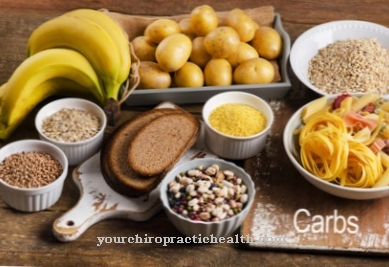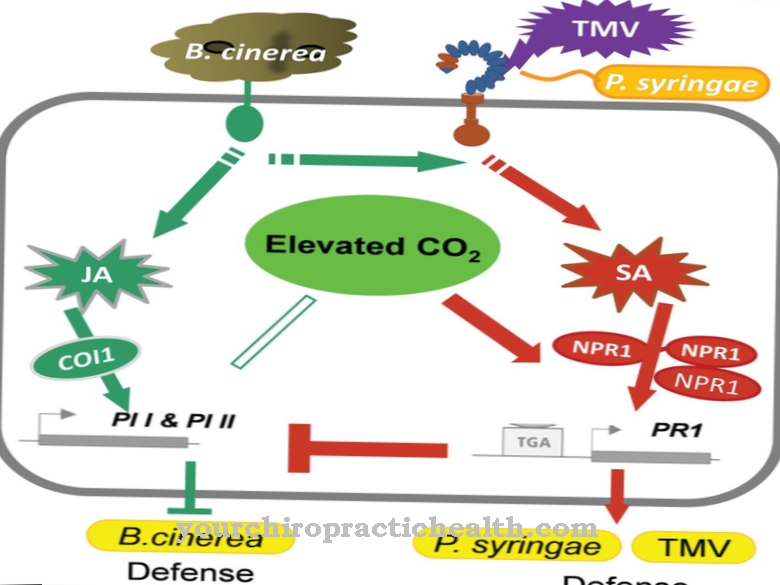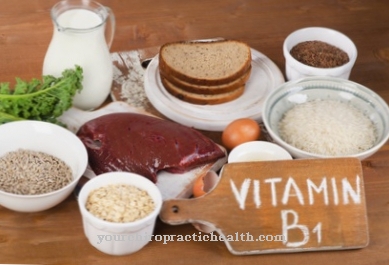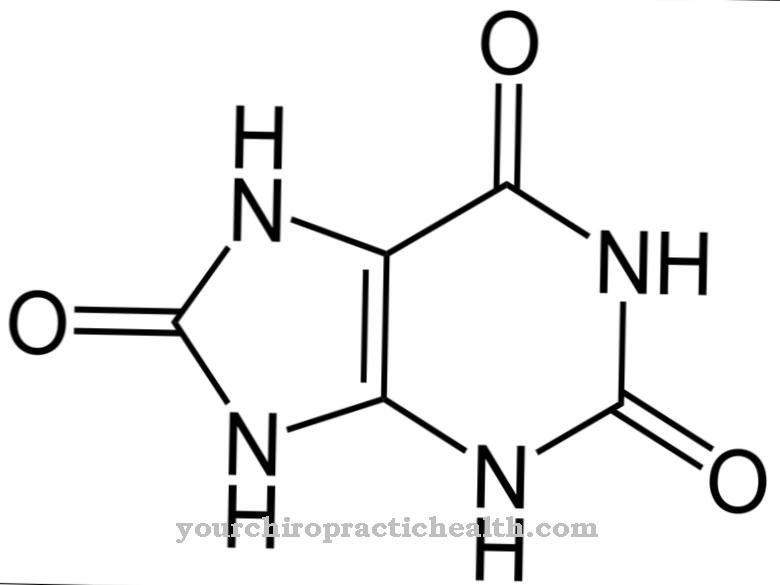Thyroxine is the body's own hormone that is produced in the thyroid gland. It is involved in many processes in the body.
What is Thyroxine?

Thyroxine is stimulated by the hormone TSH (thyroid-stimulating hormone). TSH is not produced in the thyroid gland, but in the pituitary gland. Thyroxine occurs in different forms in the body, as T3 and T4. These different names result from the iodine atoms in the molecule - three or four in number.
However, only T4 is formed directly in the thyroid; the conversion to T3 takes place mainly via the liver, kidneys and muscles. Thyroxine is released into the blood and is involved in carbohydrate, fat and protein metabolism. The heart and circulatory system is also controlled by thyroxine. Other hormones are also dependent on thyroxine.
Production, Education & Manufacturing
The TSH controls the production of thyroxine. As soon as there is no longer enough thyroid hormones in the body, the pituitary gland releases TSH and sends the signal to the thyroid gland that thyroxine is needed.
The thyroid then begins to produce or release thyroxine. The thyroid is able to store the thyroxine and, in an emergency, to supply the body for about ten months without any new production. There would still be no thyroxine deficiency.
As soon as there are enough thyroid hormones in the blood again, the TSH is reduced and production is reduced. It is a sensitive hormonal cycle that can be disrupted by many factors. The thyroid gland needs iodine for the production of the hormones, but nowadays it is usually supplied in sufficient form through a full diet and can be consumed.
Thyroxine is needed for the heart and circulatory system. It controls the strength of the heart muscle and, as a result, the pulse rate. The heat regulation depends on thyroxine and is needed more in winter than in summer. In addition, thyroxine is crucially involved in the sugar and fat metabolism. Together with other hormones, such as insulin, it ensures the breakdown of sugar and the storage or conversion of fat and carbohydrates.
This has a decisive influence on whether the body stores these substances or can excrete them again. These processes mainly take place in the liver and partly in the intestine. A constant, normal body weight is therefore very much linked to the thyroid function. In the development phase, thyroxine is needed for the development of the brain and nerve functions.
If there are major deficiencies during pregnancy, this can even lead to irreparable brain damage in the unborn child. Thyroxine can be taken in tablet form when needed. The medicine ensures a sufficient level of the hormone in the blood.
Illnesses, ailments & disorders

A deficiency or overproduction of thyroxine occurs when the thyroid gland is diseased. In very rare cases, a disease of the pituitary gland can also affect the production of the hormone. The thyroid gland is relatively often affected by over- or underactive functions. The thyroid gland can become enlarged or atrophy.
A simple change in the thyroid tissue can have a lasting effect on hormone production (for example so-called cold lumps). However, autoimmune diseases such as Hashimoto's thyroiditis, in which various proteins that are responsible for the production of thyroxine are attacked, are often behind poor production - thyroxine deficiency is caused by an underactive thyroid.
Graves' disease is also one of the autoimmune diseases, but here it comes to an overactive thyroid - thus an excess of thyroxine. Sometimes the over- or under-functioning is also based on malignant changes. A hormonal imbalance of thyroxine can generally be recognized first by an increase or decrease in the normal values of TSH in the blood. Further research will provide information about the exact cause.
Thyroxine is given in tablet form for people who are underactive. There are dose strengths from 25 to 200 micrograms, the dose has to be adjusted in many cases. In individual cases, the administration of simple iodine is conceivable. However, this is out of the question in the case of an autoimmune disease, since the iodine stimulates the thyroid gland again and the autoimmune process is only stimulated so that the absorption of normal iodine is to be reduced and the thyroxine that has already been converted is used, which is no longer processed by the thyroid gland must be and this relieved as a result.
In the case of hyperfunction, an inhibiting drug is used for the thyroid gland so that the thyroxine levels in the blood normalize. After an operation or removal of the thyroid gland as well as Hashimoto's thyroiditis, lifelong drug treatment with thyroxine is usually necessary.






.jpg)






.jpg)

.jpg)
.jpg)











.jpg)